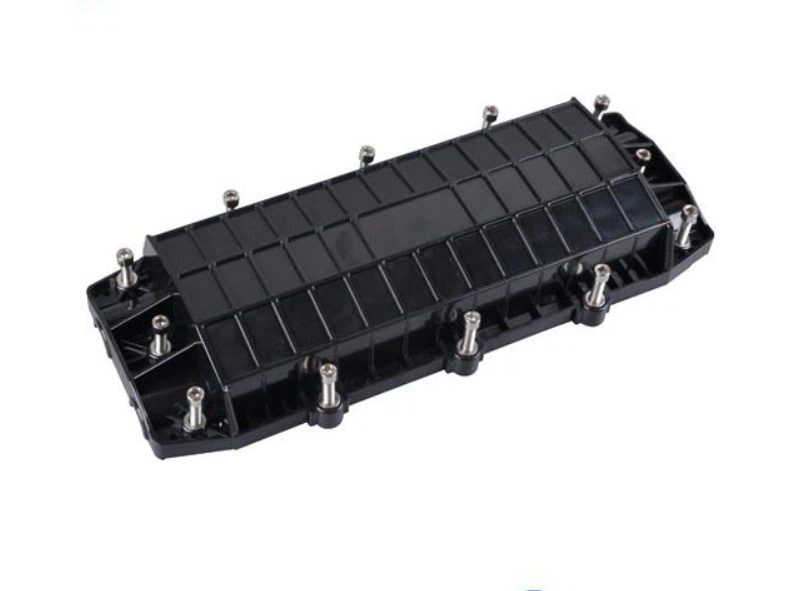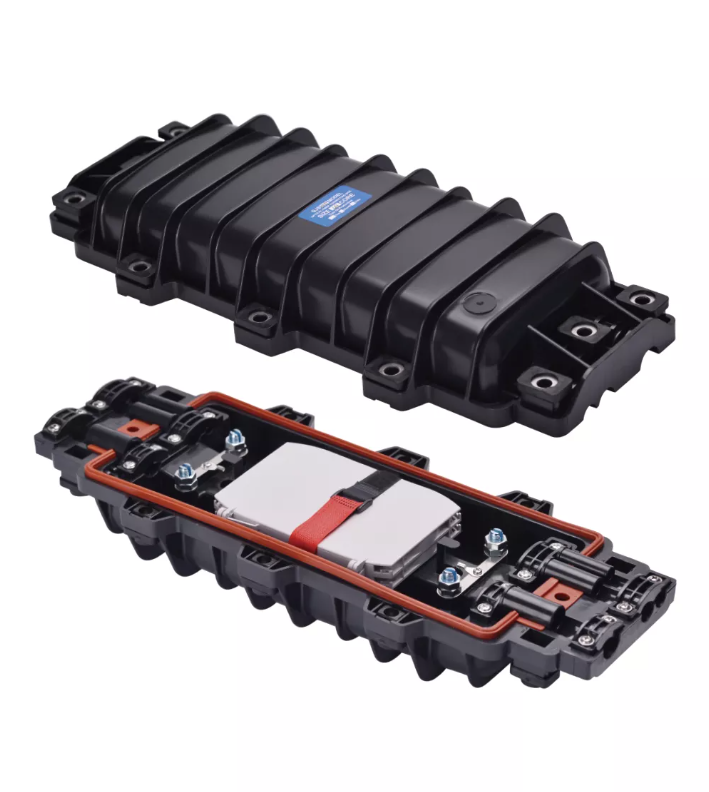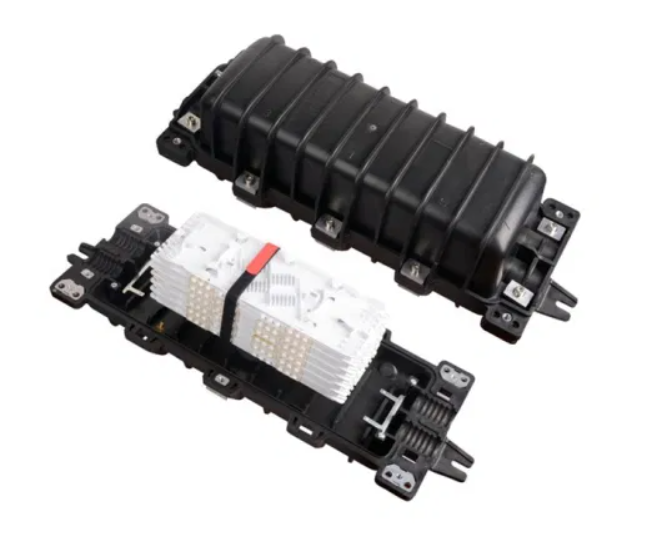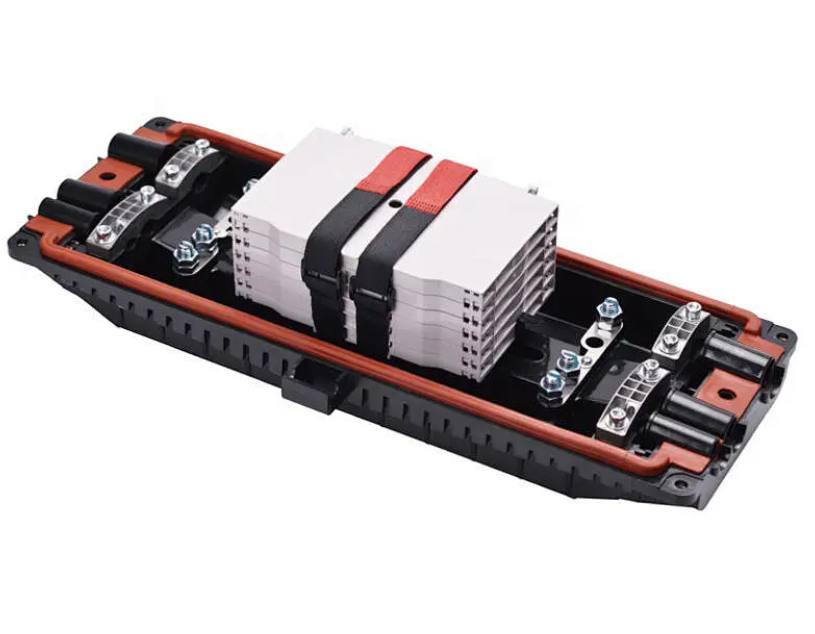The Future of Joint Closures: Exploring FTTH Fiber Applications

Unveiling the Potential of Joint Closures in FTTH Fiber Networks
Joint closures are an essential component of Fiber-to-the-Home (FTTH) networks, playing a crucial role in ensuring reliable and efficient broadband connectivity. These closures provide protection and organization for fiber optic connections, safeguarding them from external factors that could compromise their performance. By exploring the benefits and applications of joint closures, we can understand their significance in FTTH networks.
One key advantage of joint closures is their ability to seamlessly integrate with existing infrastructure, allowing for easy expansion and upgrades without disrupting the entire network. This flexibility makes them ideal for both new installations and retrofitting projects. Additionally, joint closures offer enhanced protection against environmental elements such as moisture, dust, and temperature variations.
Understanding the installation process and maintenance requirements of joint closures is vital to ensure optimal performance. Proper planning and cable management during installation help minimize signal loss and ensure efficient routing within the closure. Regular inspections and cleaning are necessary to maintain the integrity of the fiber optic network.
In the next sections, we will delve deeper into the benefits of joint closures in FTTH networks, explore different types of closures available, discuss installation processes, address common challenges faced during installations, examine future trends in joint closure technology, compare them with other fiber optic solutions, and showcase real-world case studies highlighting successful implementations.
Exploring the Versatility of Joint Closures in FTTH Fiber Networks
Joint closures offer a range of benefits in Fiber-to-the-Home (FTTH) networks, making them a versatile solution for ensuring reliable and efficient broadband connectivity.
Benefits of Joint Closures in FTTH Networks
One significant benefit of joint closures is the enhanced protection they provide for fiber optic connections. These closures are designed to shield delicate fibers from external factors such as moisture, dust, and physical damage. By creating a secure environment, joint closures help maintain signal integrity and minimize the risk of network disruptions.
Another advantage is the seamless integration of joint closures with existing infrastructure. Whether it's retrofitting an older network or expanding an FTTH deployment, joint closures can be easily incorporated without major disruptions. This flexibility allows network operators to efficiently upgrade their systems while minimizing downtime and costs.
Types of Joint Closures
There are different types of joint closures available for FTTH networks:
Dome Closures: These closures have a dome-shaped design and are commonly used in aerial or buried applications. They provide excellent protection against environmental elements and offer ample space for splicing fiber optic cables.
Inline Closures: Inline closures are compact enclosures that can be installed along the length of a fiber optic cable. They are ideal for situations where space is limited, such as inside buildings or underground conduits.
Vertical Closures: Vertical closures are designed to accommodate vertical cable runs, typically found in multi-story buildings or high-rise installations. They provide easy access to individual fibers while maintaining proper organization and protection.
By understanding the different types of joint closures available, network engineers can choose the most suitable option based on their specific installation requirements.

Ensuring Seamless Installation and Proper Maintenance of Joint Closures
Proper installation and maintenance are crucial for the optimal performance and longevity of joint closures in FTTH fiber networks.
Installation Process of Joint Closures
The installation process of joint closures involves several key steps to ensure a seamless and reliable connection:
Preparation and Planning: Before installing a joint closure, it is essential to conduct a thorough site survey to determine the best location for placement. This includes assessing environmental factors, cable routing requirements, and accessibility. Adequate preparation and planning help streamline the installation process.
Proper Cable Management: During the installation, careful attention should be given to cable management within the closure. This involves organizing cables, ensuring proper bending radius, and securing them in place using appropriate accessories. Effective cable management minimizes signal loss and facilitates future maintenance.
Importance of Maintenance for Joint Closures
Regular maintenance is vital to keep joint closures functioning optimally throughout their lifespan:
Regular Inspections and Cleaning: Routine inspections allow for early detection of any issues or potential problems with the closure. Inspecting for physical damage, loose connections, or signs of environmental wear helps prevent network disruptions. Additionally, regular cleaning removes dust or debris that may accumulate over time.
Ensuring Environmental Protection: Joint closures are designed to protect fiber optic connections from external elements. It is important to ensure that closures remain sealed properly to maintain their environmental protection capabilities. Regular checks should be conducted to verify weatherproofing integrity and make any necessary repairs or replacements.
By prioritizing proper installation techniques and regular maintenance practices, telecom professionals can maximize the performance and reliability of joint closures in FTTH fiber networks.
Addressing Common Challenges in Joint Closure Installations
Installing joint closures in FTTH fiber networks can present certain challenges that need to be addressed for a successful deployment.
Challenges Faced During Joint Closure Installations
Proper Cable Routing: One common challenge is ensuring proper cable routing within the closure. It is important to carefully plan and organize the cables to avoid excessive bending or tangling, which can lead to signal loss or damage. Additionally, managing different cable sizes and types can pose logistical challenges during installation.
Sealing and Weatherproofing: Another challenge is achieving effective sealing and weatherproofing of the joint closure. This is crucial for protecting the delicate fiber optic connections from moisture, dust, and other environmental factors. Improper sealing can compromise the integrity of the closure, leading to potential network issues.
Solutions to Overcome Installation Challenges
Using Cable Management Accessories: To address cable routing challenges, utilizing cable management accessories such as trays, brackets, or clips can help organize and secure cables within the closure. These accessories provide proper support and ensure optimal cable routing without compromising signal quality.
Applying Proper Sealing Techniques: To overcome sealing and weatherproofing challenges, it is essential to follow manufacturer guidelines for applying sealants or gaskets. This ensures a tight seal between closure components, preventing water ingress and maintaining environmental protection. Regular inspections should also be conducted to identify any potential areas of concern and make necessary adjustments.
By addressing these common challenges with appropriate solutions during joint closure installations, telecom professionals can ensure a smooth deployment process and maintain the integrity of their FTTH fiber networks.

Exploring the Future of Joint Closures in FTTH Fiber Networks
As technology continues to advance, joint closures in FTTH fiber networks are poised to undergo exciting developments and innovations.
Future Trends in Joint Closures
Advancements in Closure Materials: The future of joint closures will see the introduction of new materials that offer enhanced durability, flexibility, and protection. These advancements will ensure better resistance against environmental factors such as extreme temperatures, moisture, and UV radiation. Improved closure materials will contribute to the longevity and reliability of FTTH networks.
Integration with Smart City Infrastructure: With the rise of smart city initiatives, joint closures will play a crucial role in integrating fiber optic networks with various urban infrastructure components. This integration will enable seamless connectivity for smart devices, sensors, and IoT applications. Joint closures will be designed to accommodate the increased demand for data transmission and support the expansion of smart city technologies.
Comparing Joint Closures with Other Fiber Optic Solutions
Benefits of Joint Closures over Splicing Trays: While splicing trays provide a means to organize fiber optic cables, joint closures offer additional benefits. Joint closures provide superior protection against environmental elements and physical damage due to their robust construction. They also allow for easier access during maintenance or repairs compared to splicing trays.
Advantages of Joint Closures in Harsh Environments: In harsh environments such as coastal areas or industrial settings, joint closures excel due to their weatherproofing capabilities and rugged design. They can withstand extreme temperatures, humidity, and exposure to chemicals or corrosive substances better than other fiber optic solutions. This makes them ideal for deployments where resilience is paramount.
By embracing these future trends and recognizing the advantages of joint closures over alternative solutions, telecom professionals can ensure reliable FTTH fiber networks that meet the evolving demands of broadband connectivity.
Real-World Success Stories: Joint Closure Implementations in Action
Joint closures have been successfully implemented in various real-world scenarios, showcasing their effectiveness in ensuring reliable and efficient FTTH fiber networks.
Case Study 1: Joint Closure Implementation in a Large-scale FTTH Network
In a large-scale FTTH network deployment, the implementation of joint closures resulted in significant improvements in network reliability and performance. By utilizing high-quality joint closures, network operators experienced reduced signal loss and improved signal integrity. This led to enhanced broadband connectivity for end-users, resulting in increased customer satisfaction. Additionally, the streamlined maintenance and troubleshooting capabilities of joint closures allowed for quicker identification and resolution of any network issues, minimizing downtime and improving overall network efficiency.
Case Study 2: Joint Closure Deployment in Challenging Environments
In challenging environments such as areas prone to extreme weather conditions or harsh industrial settings, joint closures proved to be invaluable. By ensuring proper fiber protection against moisture, temperature variations, and physical damage, joint closures maintained uninterrupted network connectivity even under adverse circumstances. In situations where restoration of network connectivity was required due to external factors, the efficient design of joint closures facilitated swift repairs and minimized service disruptions.
These real-world success stories highlight the practical application and benefits of joint closures in diverse FTTH fiber network deployments. By choosing the appropriate joint closure solutions based on specific requirements and environmental factors, telecom professionals can achieve reliable and resilient broadband connectivity for their customers.
Embracing the Future: Joint Closures in FTTH Fiber Networks
Joint closures are essential components for the future of FTTH fiber networks. Their role in protecting and organizing fiber optic connections is crucial for ensuring reliable and efficient broadband connectivity. By embracing proper installation and maintenance practices, network operators can optimize the performance of joint closures and maximize their lifespan.
As technology continues to advance, joint closures will evolve to meet the changing demands of FTTH networks. Continued advancements in closure materials and integration with smart city infrastructure will shape the future of joint closures, enabling even more robust and resilient fiber optic networks.
By recognizing the importance of joint closures, telecom professionals can ensure the success of their FTTH deployments and provide seamless broadband connectivity to end-users.

See Also
Unveiling the Advantages of Pre-Connectorized Fiber Nap Boxes in FTTx
Comparing FC/UPC and FC/APC: The Future of Fiber Optic Patch Cord Connectors
Advancements and Trends in Rodent-Proof Fiber Optic Technology: Shaping the Future
Revolutionizing Fiber Optic Connectivity: The Power of Switchable Uniboot Patch Cords
Innovations and Trends in Fiber Optic Termination Technology: Shaping the Future


